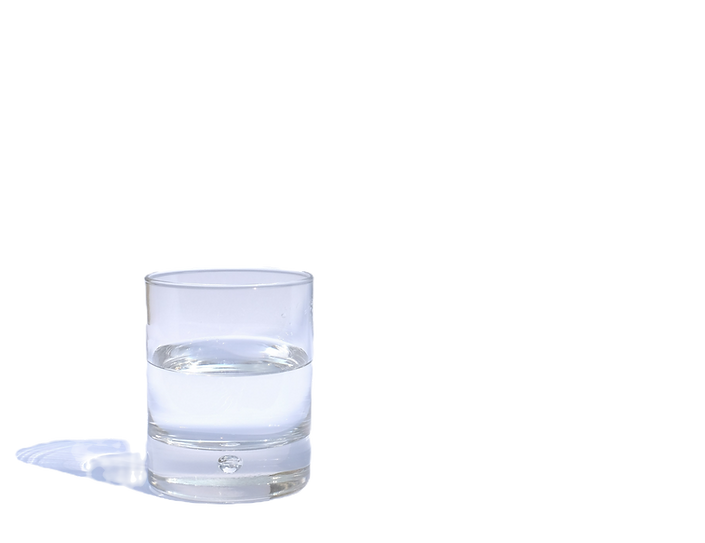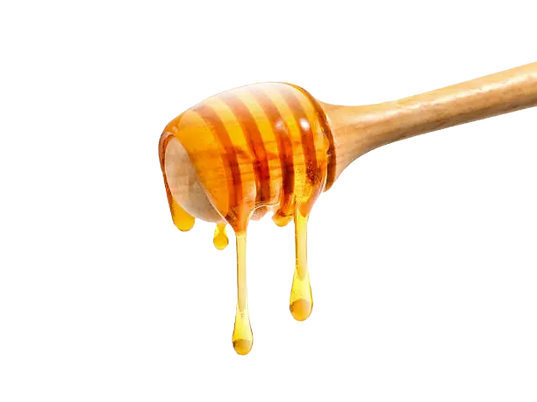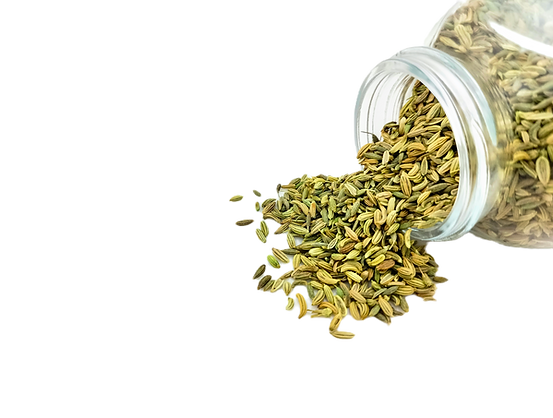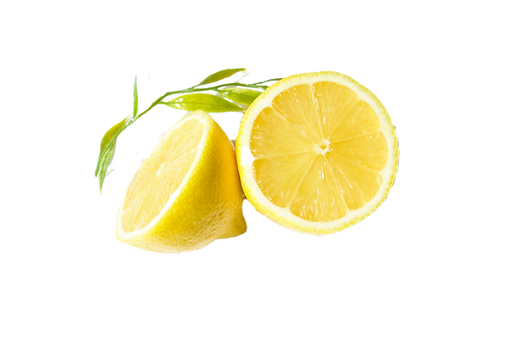This page is a resource for people who would like to learn more about the ingredients we use in our products.
We highlight the cereals, herbs, roots, fruits, and flowers that have nourished humanity for centuries.
In such a busy present, it's easy to overlook that the ingredients and processes behind beer have legendary histories.
At Canyas, sure, we approach beer ingredients like a chef considers produce for a delicious meal, but we also approach it with the mindfulness of a nutritionist, attentive to each ingredient’s functional qualities.
Canyas partners closely with Catalunya’s award-winning local brewers, to facilitate a thoughtful marriage between their expert recipes and the nutritious ingredients we select, carefully balancing enhancements with flavour.
The story Canyas is trying to tell with our ‘functional ingredients’ is in fact kind of already beer’s story!
It’s a story about how living beings compete and cohabitate in a chaotic biological world, how humans have made use of organisms for nutrition, preservation and enjoyment.
It’s a story about how ingredients deserve a little more thought, not only for their flavours but for their functionalities, too.
Disclaimer
Please note information on this page refers only to the ingredients. Any health claims (nutrient value, functionality, etc.) made or implied only reflects that of the ingredient, and not our products.
 wheat |  water |
|---|---|
 passion fruit |  star anise |
 vitamin d3 |  oats |
 lemon |  lemon zest |
 kombucha scoby |  lemon balm |
 hops |  fennel seed |
 guava |  honey |
 hibiscus |  green tea |
 dandelion root |  dandelion petals |
 chicory |  barley |
 barley |  cane sugar |
 black tea |
Why is a beer company talking about nutrition?
Alcohol is inherently unhealthy but discussing beer honestly means acknowledging:
-
fermentation (probiotics),
-
sterilisation (bacteria control),
-
the antimicrobial and antibacterial properties of hops, and
-
the diverse health-related functions of traditional brewing ingredients like turmeric, nettle leaf, cacao, coffee, honey, star anise, and many more.
The functional significance of craft beer stretches back thousands of years.
Beer has long contributed to human prosperity:
-
from the discovery of microbes (because it caused beer to spoil), revolutionising medicine and food hygiene,
-
to providing safe hydration for everyday people (before clean drinking water was common),
-
or benefiting from the antimicrobial properties of hops for long periods of storage,
-
or the development of refrigeration (to keep our beer cold).

Why does 'living' beer matter?
Did you know pasteurisation involves heating beer to kill bacteria, including beneficial bacteria?
From our perspective, mainstream lagers that undergo this process are essentially lifeless.
That's why Canyas exclusively collaborates with artisan brewers who craft unpasteurised, unfiltered, small-batch beer.
We believe humanity took a misstep focusing excessively on economies of scale and production efficiency.
We think there is a need to course correct, a need to inspire people to return to authentic, artisan beer. Recipes and processes that our ancestors refined since the dawn of civilisation.

Live yeast scavenges oxygen (better stability), naturally carbonates (finer bubbles, softer mouthfeel), and leaves trace B-vitamins, amino acids, and cell-wall polysaccharides that support body and foam.
Plus, it conditions over time, adding aroma and a softer mouthfeel. The trade-off is clear: craft beer has a shorter shelf life and the need for constant cold storage, but it's better tasting, more functional beer.
Why stop with beer's existing functionality?
Canyas is deeply inspired by the existing functionality of craft beer. But why stop with beer’s existing benefits?
You see, drinking alcohol is a risk. However, alcohol adds value to beer because it carries flavour and slows degradation. It's also anchored in ritual and social belonging.
Ok, alcoholic beer is linked to cancer but we all drink beer, what next? Could we enhance antioxidant levels? And so the Canyas experiment begins.
Right: recipes don't always work out the way you expect! Robin and Cova (Head Brewer at partner brewery Cyclic Beer Farm) discuss a recipe modification on the fly.

Overview
A broad overview of what goes into beer
Base
Core source of sugars
Living Cultures
Organisms that convert sugars
Hops
Bitterness, preservation, flavour
Water
The stuff of life and purity
Fermentables
Adjunct sources of sugar
Heat + Time
Catalysts for change
Vitamins + Minerals
Additional supplements
Botanicals
Function, aroma, flavour
Fruit
Function, sugars, flavour, aroma
Bases
Bases are the core grains that supply fermentable sugars, body, and foundation flavour for beer. Yeast ferments these sugars, converting them into alcohol, carbon dioxide, and flavour compounds.
Barley
Hordeum vulgare


Antioxidant-rich; Prebiotic fibre/viscosity (β-glucans); ferulic & p-coumaric acids; tocols (vitamin E family); B1/B3/B6; minerals: magnesium, phosphorus, selenium.
TRADITIONAL USE
The backbone of beer for millennia; kilned and malted for enzymes and fermentables.
WHY WE USE IT
Fermentable sugars, enzyme power, malt body, foam stability.
Oats
Avena sativa


Prebiotic fibre/viscosity β-glucans; avenanthramides; tocols (vitamin E family); minerals: manganese, phosphorus, magnesium.
TRADITIONAL USE
Mouthfeel in stouts and hazy styles.
WHY WE USE IT
Beta-glucans for silkier body and haze stability.
Wheat
Triticum aestivum


Prebiotic fibre/viscosity (proteins, β-glucans); arabinoxylans; ferulic acid; B-vitamins (B1, B3, folate); minerals: manganese, phosphorus.
TRADITIONAL USE
Head and haze in classic wheat styles.
WHY WE USE IT
Head retention, protein-driven body, haze where desired.
Water
Aqua

Good old fashioned H2o. We've put it in this section because it's used to boil the cereals to make the base of beer - the 'wort'.
TRADITIONAL USE
Hydration ;)
WHY WE USE IT
To make wort.
Hops
Hops deliver bitterness, aroma and flavour, while helping preserve beer. Hundreds of hop varieties exist, from Old World German and English classics to bold New World variants from the US, Australia, and New Zealand. We’ll add to this list as we use them.
Hops
Humulus lupulus



Antioxidant-rich; Antimicrobial/acidic; Calming (xanthohumol, hop acids). α-acids (humulone) → iso-α; β-acids (lupulone); prenylflavonoids (xanthohumol, 8-prenylnaringenin); essential oils (myrcene, humulene, caryophyllene).
TRADITIONAL USE
Bitterness, aroma, microbial stability.
WHY WE USE IT
Iso-alpha bitterness (every reciepe has a target bitterness in IBUs (international bitterness units), essential oils for flavour/aroma, foam support.
Cascade Hops
Cascade hops are a classic American variety, known for their bright grapefruit-citrus flavour, floral aroma, and subtle spice that give beers a crisp, refreshing character.
In Mediterranean Spain, Cascade tends to develop softer citrus and more floral-herbal qualities, with less sharp grapefruit than in the US Pacific Northwest. The warmer climate and higher sun exposure push oils toward sweeter orange, mandarin, and blossom notes, while bitterness is milder.
Chinook Hops
Chinook hops are a bold American variety, valued for their distinctive pine and resin character, layered with grapefruit-citrus brightness and a peppery spice that lends beers a robust, lingering bitterness.
In Mediterranean Spain, Chinook tends to shift away from the harsher pine bite and shows a rounder, more balanced profile. The warmer climate softens the resin and pushes the flavour toward sweeter citrus—orange, tangerine, and candied peel—while still carrying a gentle herbal-spicy edge.
Fermentables
Simple sugars consumed by the yeast to raise alcohol, lighten body, and create a drier finish. People are often surprised these ingredients don't necessarily raise the sweetness profile.
Cane Sugar
Saccharum officinarum

Sucrose, negligible vitamins/minerals. Cane sugar is less processed than common sugar or HFCS.
TRADITIONAL USE
Belgian ales, priming, high-gravity drying.
WHY WE USE IT
It’s 100% fermentable, so it raises alcohol without adding body, haze, or sweetness. Grain adds starches and proteins, which thicken the beer; sugar lightens it.
Honey
Mel

Antimicrobial (peroxide/phenolics); Antioxidant-rich; phenolics/flavonoids (e.g., pinocembrin, chrysin); enzyme glucose oxidase → H₂O₂; trace potassium and minerals (varies).
TRADITIONAL USE
Mead, braggot, conditioning sugars.
WHY WE USE IT
Highly fermentable sugar; subtle floral top-note.


Botanicals
Herbs and spices add nuance, structure, and complementary flavours, while also contributing colour, mouthfeel, and in many cases functional properties such as digestive support. Use of these ingredients should be subtle and only add depth.
Chicory Root
Cichorium intybus



Digestive; Prebiotic fibre (inulin); Antioxidant-rich; inulin; chlorogenic acids; sesquiterpene lactones; potassium.
TRADITIONAL USE
Digestive; Prebiotic fibre (inulin); Antioxidant-rich.
WHY WE USE IT
Roasty, nutty; adds depth.
Dandelion Flowers
Taraxacum officinale


Digestive; Antioxidant-rich; carotenoids (e.g., lutein), flavonoids; provitamin-A activity (from carotenoids).
TRADITIONAL USE
Wines, spring tonics, bitters.
WHY WE USE IT
Light floral bitterness; honeyed meadow nuance.
Dandelion Roots
Taraxacum officinale radix



Digestive; Prebiotic fibre (inulin); Antioxidant-rich.
inulin; phenolic acids; triterpenes (e.g., taraxasterol); potassium.
TRADITIONAL USE
Roasted root beverages; bitters.
WHY WE USE IT
Earthy, toasted bitterness for depth.
Fennel Seeds
Foeniculum vulgare



Digestive (carminative); Antioxidant-rich. Specifics: anethole, fenchone; flavonoids; minerals: calcium, manganese.
TRADITIONAL USE
Baking, aperitifs, liqueurs.
WHY WE USE IT
Clean anise note that lifts perceived sweetness.
Hibiscus
Hibiscus sabdariffa



Antioxidant-rich (anthocyanins); Antimicrobial/acidic (organic acids).
Specifics: delphinidin- & cyanidin-glycosides; hibiscus (dihydroxytartaric), citric & malic acids; some vitamin C.
TRADITIONAL USE
Infusions and teas.
WHY WE USE IT
Vivid red colour (people like 'pink'!); tart lift.
Lemon Balm
Melissa officinalis




Calming (nervine); Antioxidant-rich (rosmarinic acid); Digestive (mild).
Specifics: rosmarinic acid; citral isomers (neral/geranial); luteolin glycosides; essential oil.
TRADITIONAL USE
Culinary and aromatic herb.
WHY WE USE IT
Lemony top-note without peel bitterness.
Lemon Zest
Citrus limon



Antioxidant-rich (flavonoids); Digestive (bitter). Specifics: flavanones (hesperidin, eriocitrin), polymethoxylated flavones; essential oils (limonene, citral).
TRADITIONAL USE
Infusions and culinary.
WHY WE USE IT
Bright oils, pith-free citrus (pith is bitter).
Star Anise
Illicium verum



Digestive (carminative); Antioxidant-rich.
Specifics: anethole; shikimic acid; flavonoids; minerals (trace calcium, iron).
TRADITIONAL USE
Culinary spice blends, bitters, liqueurs., infusions.
WHY WE USE IT
Clean subtle liquorice note; boosts perceived sweetness, but mostly just to add depth
Tea - Black
Camellia sinensis




Antioxidant-rich; Stimulant; Digestive (tannins).
Specifics: theaflavins, thearubigins, catechins; caffeine; L-theanine; manganese.
TRADITIONAL USE
Infusions; sometimes in mixed ferments.
WHY WE USE IT
Tannin structure, briskness, gentle bitterness.
Tea - Green
Camellia sinensis



Antioxidant-rich; Stimulant.
Specifics: catechins (EGCG, EGC, ECG); caffeine; L-theanine; manganese.
TRADITIONAL USE
Tea! Infusions...
WHY WE USE IT
Green, citrus-herbal lift without extra hop bitterness.
Fruit
Fruit brings vivid aroma, acidity, colour, and juicy flavours.
Guava
Psidium guajava




Immune-related nutrients (vitamin C); Antioxidant-rich; Prebiotic fibre (pectin).
Specifics: vitamin C; carotenoids (incl. lycopene in pink types); fibre (pectin); potassium.
TRADITIONAL USE
Juices, jams, desserts.
WHY WE USE IT
Tropical roundness and gentle acidity.
Lemon
Citrus limon



Immune-related nutrients (vitamin C); Antimicrobial/acidic. Specifics: vitamin C; citric acid; flavanones (eriocitrin).
TRADITIONAL USE
Culinary zesting and acidification.
WHY WE USE IT
Crisp acidity.
Passionfruit
Passiflora edulis



Antioxidant-rich (carotenoids); Antimicrobial/acidic.
Specifics: vitamin C; carotenoids (β-carotene, cryptoxanthin); potassium; fibre (pectin).
TRADITIONAL USE
Juices, desserts, aromatics.
WHY WE USE IT
High-impact aroma and tart lift.
Living Cultures
Live organisms that drive fermentation, converting base-wort sugars into alcohol or acidity, building natural carbonation, and adding layers of flavour and texture.
Brewer's Yeast
Cichorium intybus



Antioxidant-related; B-vitamin source (raw yeast); Prebiotic polysaccharides. Specifics: intracellular B-vitamins (B1, B2, B3, B6, folate); glutathione and antioxidant enzymes; cell-wall β-glucans and mannans/MOS. Note: levels in finished, clarified beer are typically low.
TRADITIONAL USE
First isolated in 1883 by Emil Christian Hansen at Carlsberg Laboratory, Copenhagen; today supplied by global yeast labs in dried or liquid cultures. Fermented beer, wine, and bread for thousands of years (people used to think it was 'spontaneous', but bacteria came from the air).
WHY WE USE IT
Can't really make beer without it! Primary driver of fermentation; converts sugars into alcohol and CO₂.
Kombucha SCOBY
Symbiotic culture of bacteria and yeast



Digestive (traditional ferment); Antimicrobial/acidic.
Specifics: organic acids (acetic, gluconic, glucuronic, lactic); live yeasts (e.g., Saccharomyces/Zygosaccharomyces) and AAB (e.g., Komagataeibacter/Acetobacter); carry-over polyphenols from tea; small, variable B-vitamins (B1/B2/B6) depending on culture.
TRADITIONAL USE
The backbone of kombucha.
WHY WE USE IT
A necessary part of kombucha. We're interested because it's what makes kombucha probiotic, contributing to your gut ecosystem.
Vitamins & Minerals
Vitamins & minerals are micronutrients the body needs in tiny amounts to run core processes. Vitamins are organic compounds, some humans make naturally. Minerals are inorganic elements the body needs but can't make. Optimal supplement levels largely depend on your diet, lifestyle, genetics and environment.
For legal reasons, we can only add these supplements to products with less than 1.2% alcohol. We will add to this list as we use them.
Vitamin D3
Cholecalciferol


The 'Sunshine nutrient'. Immune-related nutrient; hormone precursor (prohormone).
Specifics: converted in the body to 25(OH)D (liver) then 1,25(OH)₂D (calcitriol), the active hormone. Lanolin-derived.
TRADITIONAL USE
Food grade additive for fortification of beverages and foods.
WHY WE USE IT
It's one of the major vitamins that most people lack, especially our friends in less sunny locations.
_edited.png)


